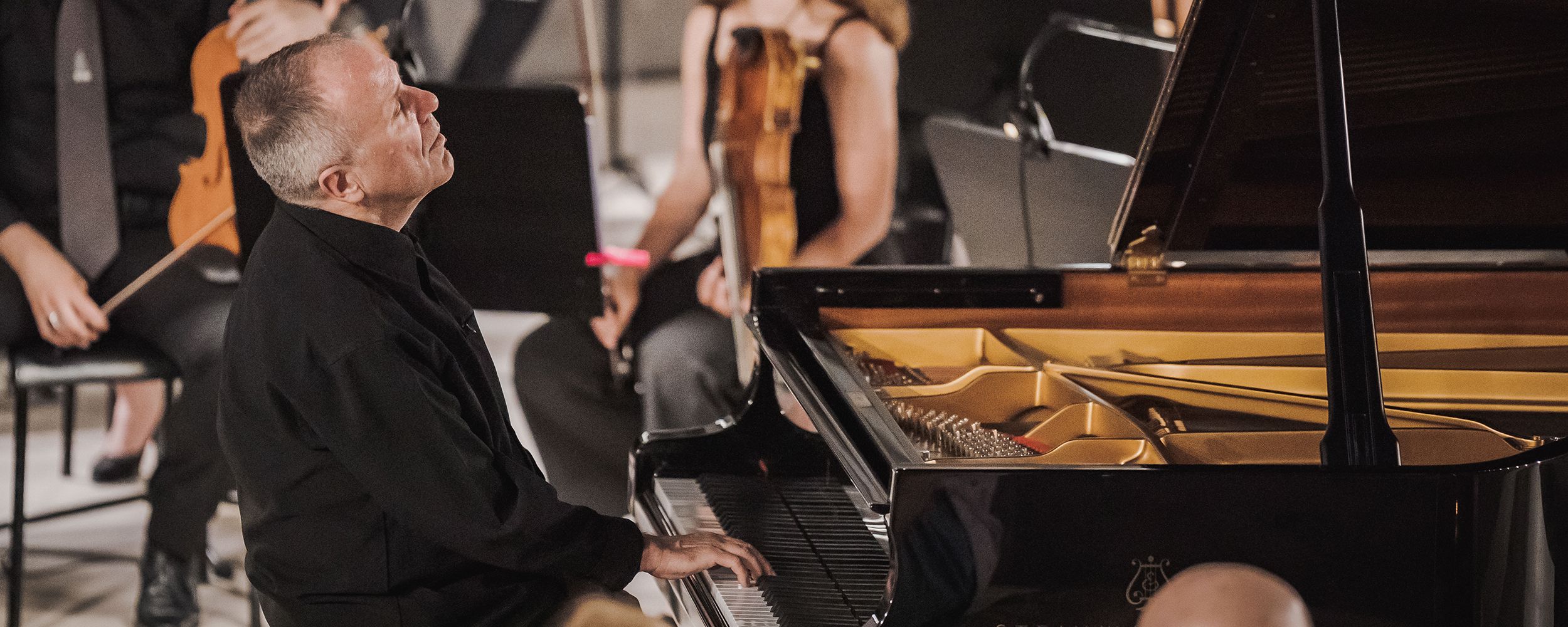June 10, 2024: Alexander Lonquich conducting Orchestra Giovanile Italiana

Alexander Lonquich and the Orchestra Giovanile Italiana return to the Maggio on Monday, June 10th, 2024, at 8pm.
Compositions by Franz Schubert and Anton Bruckner is on the bill.
Maestro Lonquich in the double role of conductor and pianist; soloists Hanna Schmidt on violin and Leonardo Voltan on cello.
On the occasion of the 40th anniversary of the foundation of the Orchestra Giovanile Italiana
Florence, June 8th, 2024 – Two years after their last concert on the stages of the Maggio, maestro Alexander Lonquich and the Orchestra Giovanile Italiana - this year celebrating 40 years of activity - return on Monday, June 10th at 8pm in Zubin Mehta Hall, as part of the 86th Maggio Musicale Fiorentino Festival.
On the bill - opening of the concert - a chamber composition by Franz Schubert, namely the Trio in E flat major for piano Notturno, op. 148, D. 897 which was probably composed in 1827 as a slow movement of a larger "Trio": the piece is based on two episodes which see the violin and cello engaged in a dialogue with the piano.
Closing the performance, the famous Symphony no. 4 in E flat major, called Romantische by Anton Bruckner, in the 1874 version: performed for the first time in February 1881 by Hans Richter together with the Vienna Philharmonic, with it Bruckner obtained his first public recognition. His Fourth had also cost him a big effort: in fact it took almost ten years of work during which continuous revisions, cuts and modifications led to four author's versions.
During the performance of Schubert's Nocturne, the protagonists are Alexander Lonquich on the piano and two first parts of the orchestra: the first violin Hanna Schmidt and the cello supporter Leonardo Voltan.
The program:
Franz Schubert
Piano Trio in E flat major Nocturne, Op. 148, D. 897
The Adagio for piano, violin and cello in E flat major op. 148 was probably composed by Schubert in 1827 as a slow movement of a larger trio. The page is based on two contrasting episodes which involve violin and cello in a dialogue supported by the piano. In the opening section, a lyrical and dreamy theme stands out accompanied by piano arpeggios while in the central episode the three instruments compete in a dense call and response with a feverish and passionate tone based on a dotted rhythm. The piece was published for the first time in 1845 by Anton Diabelli with the apocryphal title of 'Notturno', by which it is still known.
Anton Bruckner
Symphony no. 4 in E flat major, Romantische
Anton Bruckner's symphonic journey was undoubtedly long and tortuous as it was marked by personal uncertainties, prejudices and misunderstandings. After years of tribulations, with Symphony n. 4 - inaugurated on 20 February 1881 by Hans Richter at the head of the Vienna Philharmonic - Bruckner obtained his first public recognition. In reality, that last creation had cost him a lot of effort: about ten years of work during which continuous revisions, cuts and modifications led to four author's versions. The descriptive title 'Romantische' was given by the composer himself who, even without transcribing them into the score, had drawn up a series of captions of historical and literary inspiration: the awakening of a medieval city, the morning calls of the trumpets, galloping knights, serenades, cheerful scenes hunting and a noisy popular festival. Thus in the four grandiloquent movements both the dense web of descriptive associations and the naturalistic evocations, such as the magnificent call of the horns of the first movement from which much of the codicil material of the entire work derives, contribute to giving a sense of unity and cyclicality to the 'impressive Brucknerian sound edifice.



